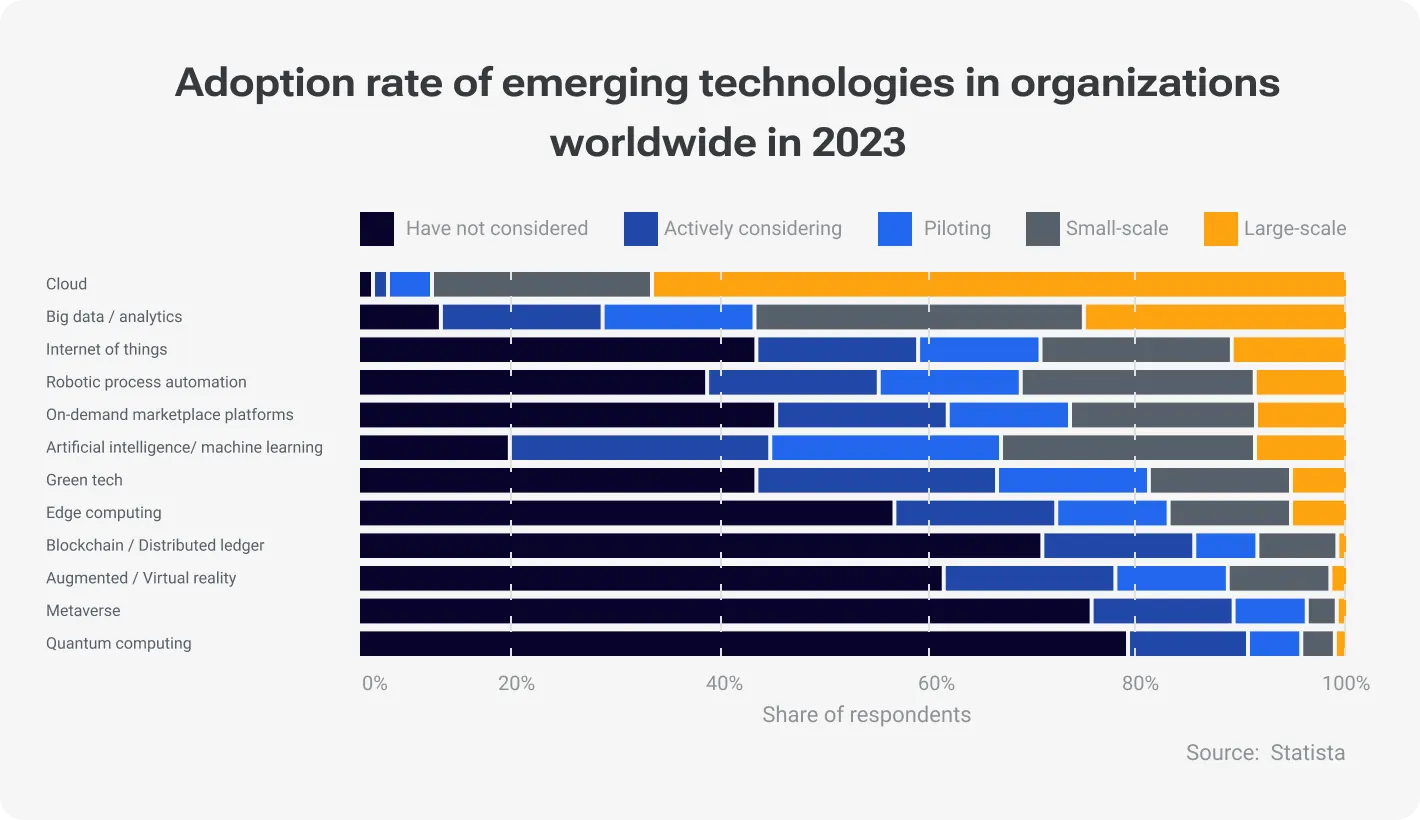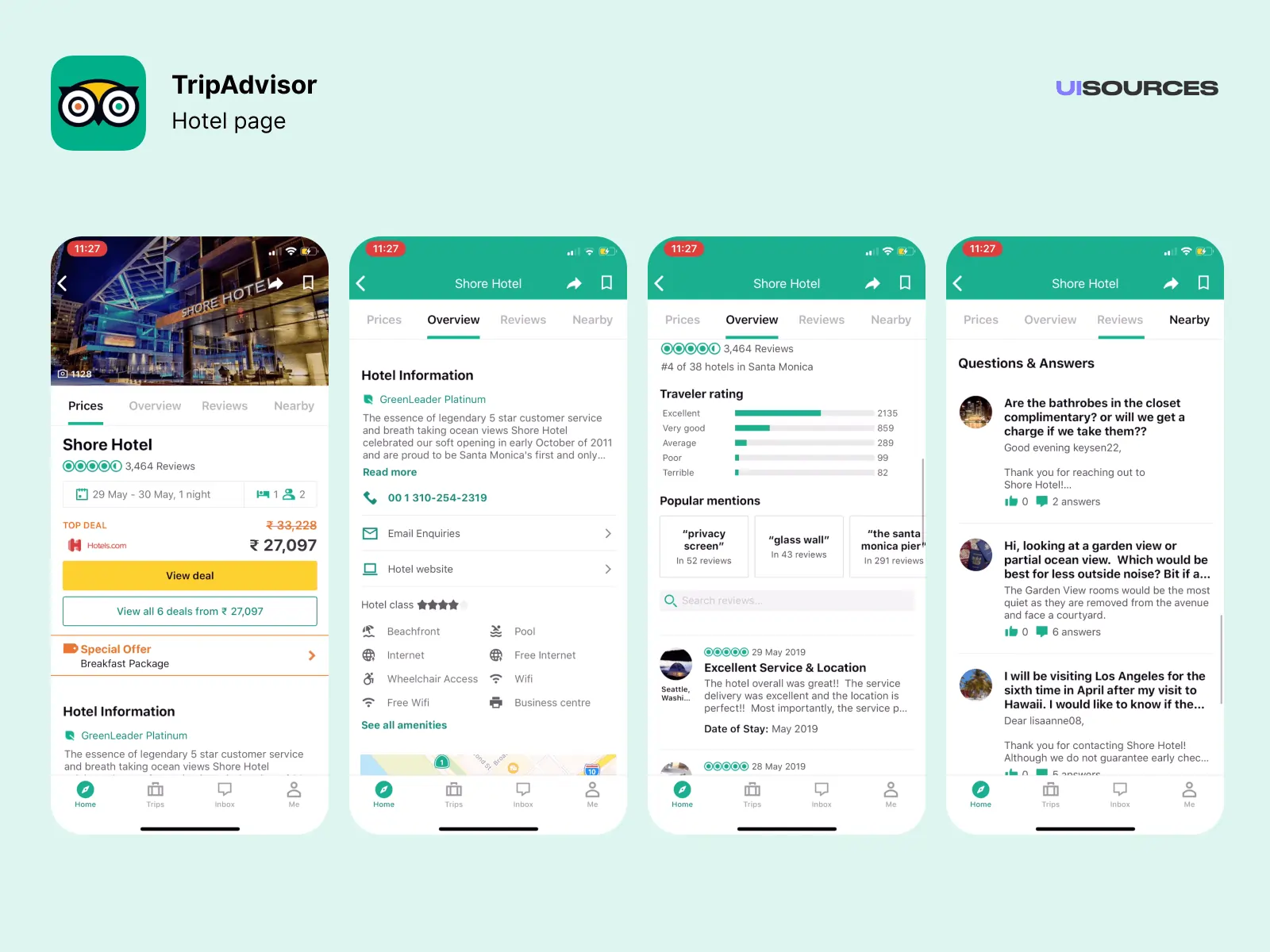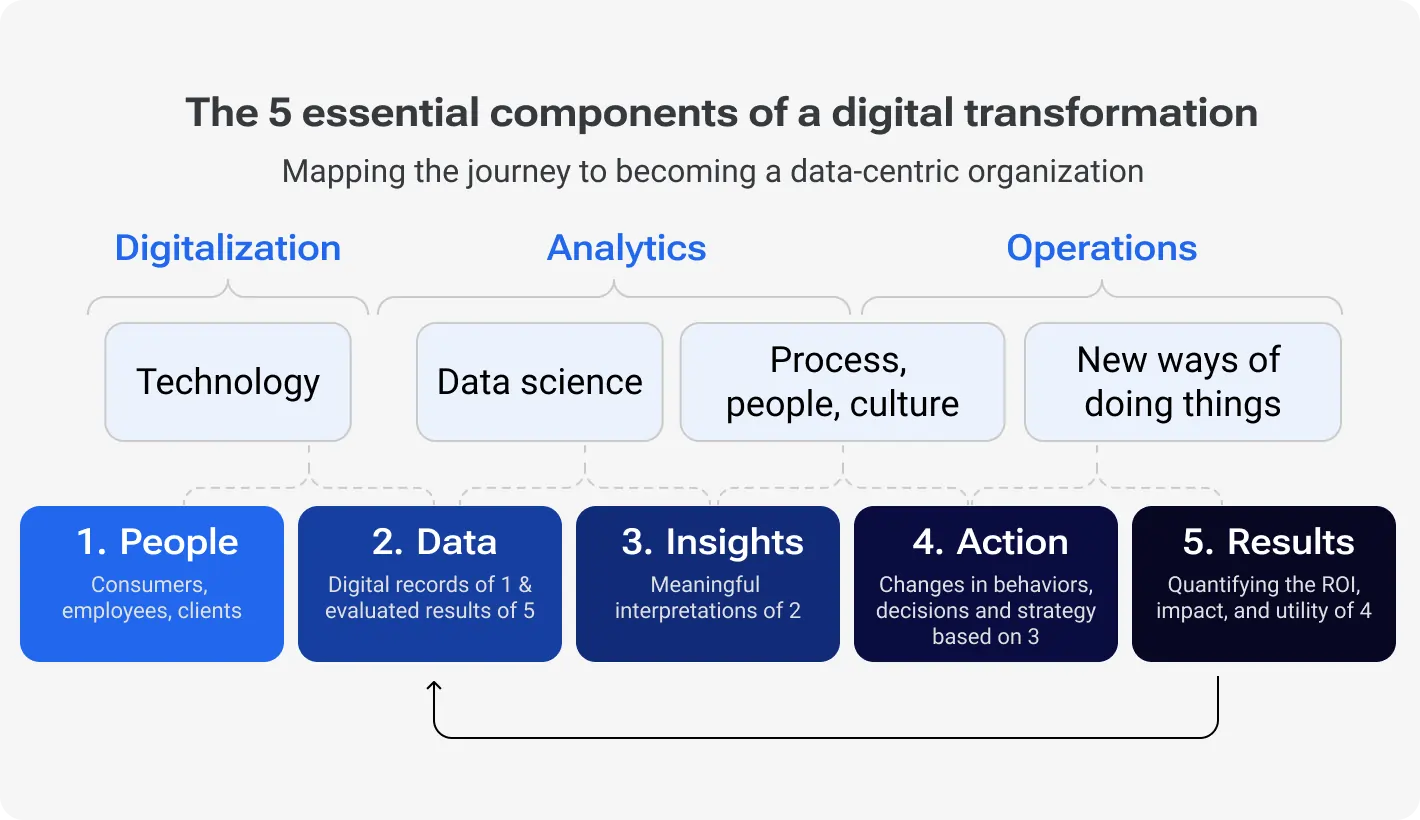Outsourcing to Czechia

How much does it cost to hire developers in Czechia?
Dec 2nd 25 - by Devico Team
Find out how much it costs to hire software developers in Czechia in 2025. Compare hourly rates, roles, and factors that impact pricing.
Hire
Hire by role
Hire Front-end developers
Hire Back-end developers
Hire Full-stack developers
Hire Android developers
Hire iOS developers
Hire Mobile developers
Hire AI engineers
Hire ML engineers
Hire Automation QA engineers
Hire Blockchain developers
Hire Data engineers
Hire Cloud engineers
Hire by skill
Hire JavaScript developers
Hire TypeScript developers
Hire Ruby on Rails developers
Hire React Native developers
Hire Flutter developers
Hire Golang developers
Hire React.js developers
Hire Python developers
Hire PHP developers
Hire .NET developers
Hire Java developers
Hire Laravel developers

Digital transformation
September 10, 2024 - by Devico Team
Summarize with:
Is your business stuck in the past? Today's successful companies are embracing cutting-edge technologies like Artificial Intelligence (AI) to soar ahead of the competition. These innovations not only excite customers but also bring a wealth of benefits, from boosted brand popularity to skyrocketing satisfaction.
The proof is in the numbers: Global spending on digital transformation is exploding, reaching a staggering $2.49 trillion in 2024 – and it's only going up! In just 7 years, this market has more than tripled, and it's projected to hit $3.9 trillion by 2027.
Ready to join this thrilling revolution and propel your business to new heights? This article is your one-stop guide to harnessing the power of AI and digital transformation.
Digital transformation is a process of integration of cutting-edge technologies into the company's business processes and products. Meanwhile, AI transformation involves the implementation of artificial intelligence.
In 2021, 77% of companies stated that they had already started digital transformation processes. A more recent survey conducted in 2023 showed that over 90% of companies worldwide are implementing emerging technologies or have already done this.
These two concepts are inextricably linked, as AI transformation can be a part of digital transformation. AI is one of the most popular technologies adopted in the process of digital transformation. 59% of companies that are actively modernizing their businesses have already introduced AI to their processes and products, while 26% more of them are actively considering this opportunity.

These modifications are very favored by companies globally and continue gaining even more popularity as they yield tangible results. They have a multitude of advantages, including the following ones.
Innovation allows businesses to automate many repetitive tasks. This will speed up task completion, increase workflow productivity, and reduce the risk of staff burnout.
Moreover, digitalization can help achieve significant reductions in the cost of maintaining workflow or brick-and-mortar stores/offices.
Additionally, modern technology can enable faster and easier decision-making. ML- and AI-based algorithms remember data about the customer and their behavior, and then use predictive analytics to determine the desired outcomes. This method is used extensively in fintech to determine customer solvency, and in healthcare for risk assessment and early diagnosis of diseases.
State-of-the-art technologies open up an immeasurable world of possibilities for improving the quality of a brand's interaction with customers. Through innovation, it is possible to:
1/ Provide some services online, making the process of getting them faster and more convenient for customers. This technique can be used in almost any sphere. In real life, there are numerous examples like this, including mobile applications of banks that allow you to conduct transactions without coming to physical branches, doctor's appointments on the websites of medical institutions, medical consultations online, hotel and ticket booking services, etc.
How is digital transformation driving customer experience?
2/ Make the interface more user-friendly. It will allow users to access the necessary features in just a few clicks. Improving user experience can be a powerful boost to higher profits. One of the reports by Forrester shows that companies in a wide range of diverse fields significantly increased their annual profits with improved UI/UX: wireless carriers — by 3 billion dollars, hotels — by 1 billion, retailers — by 277 million, and insurers — by 262 million dollars.

3/ Personalize customer experience. ML and AI technologies will perfectly help with this by studying and analyzing user behavior. And then providing them with custom recommendations. The use of this technique is very popular in many areas, especially e-commerce. All world-famous trading platforms have already implemented a system of personalized recommendations for their customers.

4/ Improve customer support. AI-powered chatbots and virtual assistants can help businesses provide faster and 24/7-accessible customer support.

Due to the ever-increasing competition, only those who are constantly improving can win. By adopting the latest technologies, you can attract more new customers and make old ones more loyal to your brand.
Using the latest technology, it is possible to:
develop new products and features that will appeal to your target audience;
make your workflow faster to serve more customers;
offer more competitive prices, which is made possible by optimizing costs;
store and process more data about clients to use it for your purposes;
improve security to increase customer trust in your brand, and so on.
In a world of ever-evolving technology, almost all companies want to implement innovations, but not everyone really succeeds in this.

According to the Boston Consulting Group research conducted in 2021, only 35% of companies achieve their goals related to digital modification. The following options give an opportunity to enter this percentage:
Clear strategy. In order to achieve your goals, you need to clearly define them first. It is necessary to understand which innovations your business really needs, why, and how exactly to implement them.
Data-driven decision-making. It is necessary to use a maximum of detailed information about the company, its customers, and competitors to define goals and justify decisions related to achieving them.
Executive sponsorship and leadership. Management at all levels should be involved in the innovation deployment process. They should allocate a budget for this, as well as stimulate and encourage initiatives related to emerging technologies.
Involving top professionals. Achieving high goals requires high-level specialists. Finding such talent can be a challenge, so it can be a good idea to cooperate with top developers in the outsourced format.
Cross-functional collaboration. To implement and apply innovation to all necessary business processes, all departments of the company must collaborate synchronously. This is especially important when deploying artificial intelligence. One of the challenges of this process could be data silos. These are problems of isolated information storage that can be avoided by ensuring quality data exchange between different departments.
Progress monitoring. To understand whether you're headed in the right direction, it's important to track results not only at the end of the journey but also at the milestones in between.
Agile approach. Using a flexible development approach with several iterations has many advantages. It makes it possible to monitor progress at each stage and correct goals and methods of their achievement, aligning with the desired final results and the overall company strategy.
Innovation culture. It is crucial to establish and foster an atmosphere of uninterrupted learning and improvement in a company. This will ensure that employees are not afraid of new technology, but work effectively with it.
Here are some practical recommendations of where to start and how to materialize your ideas of business improvement with the help of state-of-the-art technologies.
To do this as effectively as possible, follow these steps:
Think of the strengths and weaknesses of your company. Think about what already works well and does not require changes, and what needs to be improved as quickly as possible.
Study your target audience. Research your customers' personal data and behavior with your brand to determine what new features and services might interest them and how you can improve the customer experience.
Research competitors. To keep up with market trends, study what your competitors offer and think about how you can make an even better offer for your customers.
Get inspired by real-life cases. Check out examples of how world-famous companies have implemented innovations and what it has enabled them to achieve.
Define clear outcomes you want to achieve. Based on all the information, create goals that align with the company's values and overall strategy. The objectives should be clearly formulated, measurable, and achievable.
Build a detailed roadmap. Draw up a document that outlines your goals, the tasks required to achieve them, and the technology stack that will be used.
If you don’t have in-house specialists who can carry out a detailed analysis and determine which technologies it is worth implementing and how to do this, it is better to turn to third-party high-level professionals.
When the goals and methods for achieving them have already been determined, it’s time to put them into practice. To do this you may need to grow potential. This is how you can do this:
Find the required talent. Find experts who can bring your digital and AI transformation ideas to life. This may require a significant budget and highly qualified HR specialists. Also, it can take quite a while.
Contact outsourcing professionals. Do you want to save budget, effort, and time on talent acquisition? You resort to outsourced professionals who have already worked with similar requests many times and can complete the tasks at the highest level.
Prepare your in-house staff for innovation in advance. Train and prepare employees for the technologies you plan to implement in advance. This will help you avoid cultural resistance to innovation in your company.
This is a very important step if you want to avoid problems. To keep your products free of ethical and legal issues, use the following recommendations:
Research regulations in your area. You must stay up to date with constantly updated and changing laws and regulations, especially if your company is related to fintech or healthcare. Legislation especially strictly controls these spheres.
Take care of proper data storage and usage. Do not violate the rules for storing and processing client data provided for by local law. For the USA, for example, the main regulatory document is the Dodd-Frank Act. Also, ensure strong security to prevent data leakages.
Use quality information for AI training. Make sure the materials are free of bias and are not protected by copyright.
After you have introduced modern technology to your business processes, you need to make sure your staff knows how to work with it and wants to do this. Here are four essential steps of how to do this:
Continuous learning. Allocate budget and time for internal and external staff training.
Leadership. Make sure that managers of all levels demonstrate new technology expertise by their own example.
Encouragement. Reward employee initiatives related to innovations.
Loyal attitude. Don’t make employees afraid of failure in the early stages of working with new technologies.
Want some inspiration before you start the process of digital and AI transformation? Here are a couple of examples of how companies have used the latest technologies, including AI, to take their businesses to the next level.
A well-known automobile company faced the fact that displaying all the cars present in the range in brick-and-mortar showrooms requires too high costs. Digital transformation helped this market giant to solve this challenge.
In 2012, the company decided to keep only micro-showrooms with a few cars and develop special software to show other models digitally. Special screens show the cars in full-scale size. In addition, users can see how they are equipped inside and even hear the sound of the engine.
Developing a unique online showroom format helped the automotive leader reduce costs and increase sales by 60%.
The insurance company from Finland faced the challenge of too many user requests. The existing staff did not have enough time to handle all of them, but the company did not have the budget to hire more employees.
So, they decided to resort to the help of AI. They have implemented a specialized chatbot into their customer support processes. It answers the most common customer queries. It handles about 85% of requests automatically, and human consultants intervene only when it is really necessary: for complex issues requiring high expertise. This saved the company as much as 330 hours of human labor per month.
To understand whether your technological efforts are worthy or not, it is important to track the following KPIs and metrics:
Operational efficiency metrics: gross and net profit, conversion rate, average customer profit, operational expenses, ROI (return on investment), etc.
KPIs related to employee productivity: revenue per employee, task completion rate, quality of work metrics (e.g. sales rate for sales managers), turnover rate, and others.
Customer experience metrics: customer satisfaction rate, customer effort rate, retention rate, etc.
Continuously monitor key metrics and organize the collection and analysis of feedback from users. This will help you understand if you are moving in the right direction and, if necessary, change course to achieve better results.
How to measure the success of your digital transformation efforts?
The modern digital world is constantly evolving, artificial intelligence is continuously improving, and new technologies are emerging one by one. In such a fast-paced environment, it is important to track trends and keep up with the times.
What trends could make up the future of digital and AI transformation? Here are a few suggestions of which rising technologies could achieve leading popularity soon:
Automation. Automation is the future of business in any area. Automating routine processes can significantly increase business productivity and reduce costs. Therefore, AI-based software and robots will continue to develop and thrive.
Machine learning. With increasing amounts of data, you need to know how to handle it properly to capitalize on it. That's what machine learning technology is all about. These algorithms will "memorize" and process the data, which is then needed for AI to function successfully.
Augmented reality. It's a powerful tool for engaging customers, and, consequently, boosting sales. Now, quite few companies have implemented AR. But more and more businesses will do this in the coming years because this technology shows fantastic results. AR-based services engage customers 200% more effectively.
Keeping up with such a fast-paced world can be a challenge. But you can succeed in this by monitoring trends constantly, collaborating with top technology experts, and supporting a culture of innovation in your company.
Digital and AI transformations are very beneficial for businesses. However, successfully conducting them can be a challenge. To follow through and get the results you want, you need to:
have a clear strategy;
partner with top-notch technology talent;
make sure not to break the law or ethical rules during your AI and other technology implementation efforts;
maintain a culture of innovation among staff at all times.
If you are ready to start transforming your business with the help of AI and other modern technologies, contact us for a professional IT consultation.
Outsourcing to Czechia

Dec 2nd 25 - by Devico Team
Find out how much it costs to hire software developers in Czechia in 2025. Compare hourly rates, roles, and factors that impact pricing.
Outsourcing to Czechia

Nov 25th 25 - by Devico Team
Compare Czechia and Poland for software outsourcing in 2025. Discover costs, talent, infrastructure, and which country fits your project best.
Outsourcing to Czechia

Nov 18th 25 - by Devico Team
A complete guide to outsourcing software projects to Czechia, learn about costs, talent, benefits, and how to build successful partnerships in 2025.